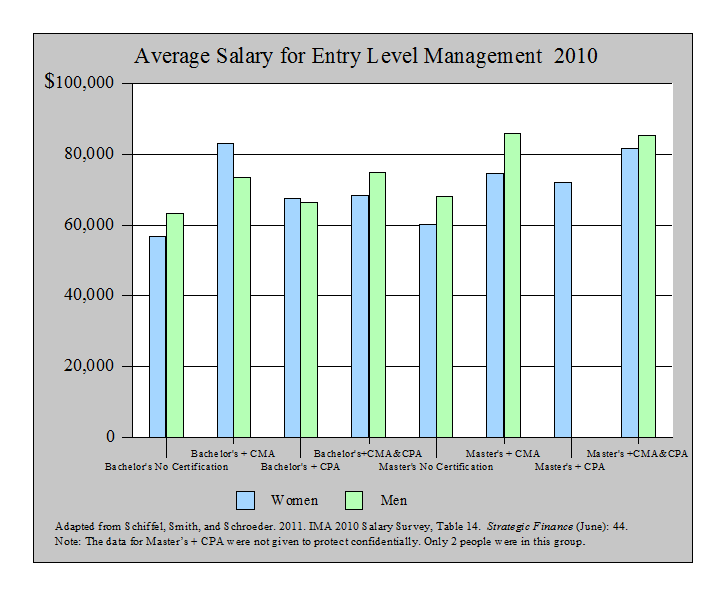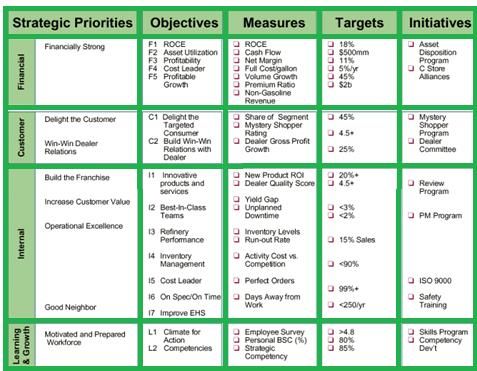
By understanding where a company’s cash comes from, investors can get a better sense of the health of the business. Additionally, analysts can use the CFF to help predict a company’s future cash needs. A company that generates positive cash flow from financing activities is in good financial health. The cash flow from financing activities (CFF) is part of a company’s cash flow statement. It shows how much cash the company has generated or used from its financing activities. Financing activities are issuing and repaying debt, as well as issuing and buying back equity.

The better these details get maintained, the more accurate your accounting will be. One common misconception is that interest expense — since it is related to debt financing — appears in the cash from financing section. Note that the parentheses signify that the item is an outflow of cash (i.e. a negative number).
What are some examples of financing activities on the cash flow statement?
But to set yourself up for success, you’ll also need to think about your business name, finances, an operating agreement, and licenses and permits. Small businesses must have a basic understanding of this concept because it’s linked to how much money we have available to run our businesses. The articles and research support materials available on this site are educational and are not intended to be investment or tax advice. All such information is provided solely for convenience purposes only and all users thereof should be guided accordingly.

While all three are important to the assessment of a company’s finances, some business leaders might argue cash flow statements are the most important. To calculate cash flow from financing activities, you need to know the beginning balance of cash and equivalents plus any inflows (such as new loans) and minus any outflows (such as loan or debt repayment). Remember that CFF can be a positive or negative number, depending on whether your company is bringing in more money than it’s paying out. Cash flow from financing activities measures how much cash is coming into a company from things like issuing new equity, taking out loans, or repaying existing debt. It’s one of the three main categories of cash flow, along with cash flow from operations and cash flow from investing activities found on a company’s cash flow statement.
Ask a Financial Professional Any Question
A positive cash flow from financing activities shows that a business raised more cash than it returned to lenders and owners. This activity may or may not indicate effective capital management, depending on the specific business circumstances. In accounting, investment activities refer to the purchase and sale of long-term assets and other business investments, within a specific reporting period. The results of a company’s reported investing activities give insights into its total investment gains and losses during a defined period. The direct method of calculating cash flow from operating activities is a straightforward process that involves taking all the cash collections from operations and subtracting all the cash disbursements from operations. This approach lists all the transactions that resulted in cash paid or received during the reporting period.
Then recalculate operating cash flow (see formula above) with the new tax figure. Basic FCF doesn’t include changes in debt, so when a company takes on new debt, basic free cash flow for that period can be misleadingly positive. Therefore, levered free cash flow, also known as free cash flow to equity (FCFE), can be more accurate. To help visualize each section of the cash flow statement, here’s an example of a fictional company generated using the indirect method.
- While all three are important to the assessment of a company’s finances, some business leaders might argue cash flow statements are the most important.
- However, this is a major red flag as this implies that the firm cannot generate sufficient earnings to finance its core operations.
- Exceptions to this rule exist, and it is advisable to exercise proper judgment while classifying cash flows.
- FCF is important because it shows how much cash a company has available to pay dividends, repurchase shares, pay down debt, or make other investments.
While these two companies belong to two entirely different industries, the calculation and categorization of these cash flows remain the same. However, it must be noted that the cash flows must be interpreted differently for companies that operate in various industries. Significant debt or equity raises may be a healthy sign for a promising startup or a company planning a significant expansion. Those same transactions might cause concern for a mature company with few growth prospects. These financial statements systematically present the financial performance of the company throughout the year. To calculate free cash flow, add your net income and non-cash expenses, then subtract your change in working capital and capital expenditure.
What is Cash Flow from Financing Activities?
You can calculate the cash flow from financing activities by looking at a company’s balance sheet. To do this, take the beginning and ending balances of long-term liabilities and short-term liabilities. As well as the change in equity (issuance of new equity minus repurchase of equity), and subtract dividends paid. Therefore, any notable change in the cash flow from financing should be probed by investors. Also, it is essential to check the other sections of the cash flow statement, such as cash flow from operating and investing activities, as these also depict a company’s financial health.
Vipshop Reports Unaudited Second Quarter 2023 Financial Results – PR Newswire
Vipshop Reports Unaudited Second Quarter 2023 Financial Results.
Posted: Fri, 18 Aug 2023 09:00:00 GMT [source]
Investing and financing transactions are critical activities of business, and they often represent significant amounts of company equity, either as sources or uses of cash. These financing activities could include transactions such as borrowing or repaying loans, or issuing shares or share buybacks, to name a few examples. Cash flow statements are one of the three fundamental financial statements financial leaders use. Along with income statements and balance sheets, cash flow statements provide crucial financial data that informs organizational decision-making.
What is an investment activity?
Rohan Arora is a member of WSO Editorial Board which helps ensure the accuracy of content across top articles on Wall Street Oasis. Free cash is the cash left over after the business has met all its obligations. It’s essential to planning future spending as it shows how much cash Cash flow from financing activities a business has at its disposal. We accept payments via credit card, wire transfer, Western Union, and (when available) bank loan. Some candidates may qualify for scholarships or financial aid, which will be credited against the Program Fee once eligibility is determined.

This can include things like investing in stocks, buying and selling property, or taking out loans. Yet it’s important to remember that it’s just one metric to consider when evaluating a company. In this case, the CFF may be artificially high because the company is taking on more debt to fund its operations. Let’s say that a company’s balance sheet has long-term liabilities of $10 million at the beginning of the year and $11 million at the end of the year. Cash Flow from Financing Activities tracks the net change in cash related to raising capital (e.g. equity, debt), share repurchases, dividends, and repayment of debt.
Hence, a statement showing flows of cash & cash equivalent during a specified time period is known as a Cash Flow Statement. One can prepare a cash flow statement if the two comparative balance sheets of a company are given. The transactions of a cash flow statement are categorised into three activities; namely, Cash flow from Operating Activities, Cash flow from Investing Activities, and Cash flow from Financing Activities. The Institute of Chartered Accountants in India has issued Accounting Standard AS – 3 revised for the preparation of cash flow statements.
- As any savvy investor knows, cash flow is one of the most important indicators of a business.
- Negative CFF numbers can mean the company is servicing debt, but can also mean the company is retiring debt or making dividend payments and stock repurchases, which investors might be glad to see.
- In accounting, investment activities refer to the purchase and sale of long-term assets and other business investments, within a specific reporting period.
- A business with consistent reduction in cash flow may not be one to consider investing in.
In simple words, it monitors the net change in cash related to capital raising and related activities. The next section, Section 8.6, brings together the complete statement of cash flows, using the direct method. In the example used in Section 8.3 and 8.4, the financing section included one transaction related to equity, and which decreased cash, for a total net cash flow from financing of $50000. Negative Cash Flow from investing activities means that a company is investing in capital assets. As the value of these assets increases, the amount of net Cash Flow available to the company over time increases.
Cash flow from investing activities comprises all the transactions that involve buying and selling non-current assets, from which future economic benefits are expected. In other words, such assets are expected to deliver value and benefits in the long run. It provides insight into all the cash that enters and leaves the business through its operating, investing, and financing activities. Similarly, the statement of cash flow portrays the company’s net cash flow for a certain financial period. Routinely calculating your cash flows using these formulas can help ensure you don’t encounter any cash-flow problems and maintain an accurate picture of your business’s financial health. Investors use unlevered free cash flow, also known as free cash flow to the firm (FCFF), when estimating a company’s enterprise value.
Shareholders’ equity transactions, like issuing of shares, payment of dividends, and share buybacks are very common financing activities. Debt transactions, such as issuance of debt, and the related repayment of debt, are also frequent financing events. It is important to note that although dividend payments to shareholders are considered as a financing activity, payments of interest to creditors are not. Cash flows from investing activities always relate to non-current asset transactions and may involve increases or decreases in cash relating to these transactions. Free cash flow and cash flow from financing are both important cash flow metrics.
Now that you know all there is to know about cash flow from financing activities, put it into practice and see how it can help your business grow. There are many benefits to engaging in financial activities, including increased wealth, improved investment returns, and greater opportunities for business growth. Financial activities can also help you manage your finances more effectively and make wise decisions about your money. The net change in cash for the period is added to the beginning cash balance to calculate the ending cash balance, which flows in as the cash & cash equivalents line item on the balance sheet. CFF indicates the means through which a company raises cash to maintain or grow its operations. When a company takes on debt, it typically does so by issuing bonds or taking a loan from the bank.
However, these figures in isolation mean nothing; it is crucial for investors to first look at the trend of cash flows by comparing it with cash flow statements of previous years. Exceptions to this rule exist, and it is advisable to exercise proper judgment while classifying cash flows. For example, the deferred tax might be a long-term liability, but taxes, in general, are accounted for under operating activities as they are considered crucial to a company’s operations.
A positive net cash flow indicates a company had more cash flowing into it than out of it, while a negative net cash flow indicates it spent more than it earned. The first step in preparing a cash flow statement is determining the starting balance of cash and cash equivalents at the beginning of the reporting period. This value can be found on the income statement of the same accounting period. Keep in mind that this number can be either a positive cash flow or negative cash flow, depending on whether more cash is coming in or going out. Cash flow from financing activities (CFF) is a key number to keep track of, as it can give you AND potential investors insight into how good or not-so-good your company’s financial health is. The cash flow from financing activities (CFF) is an important part of a company’s cash flow statement.
Snap Inc. – Snap Inc. Announces Second Quarter 2023 Financial … – Snap Inc. – Investor Relations
Snap Inc. – Snap Inc. Announces Second Quarter 2023 Financial ….
Posted: Tue, 25 Jul 2023 07:00:00 GMT [source]
The highlighted region is where you would find the cash flow from financing activities. This increase in the importance of cash flows is primarily due to the increasing use of the discounted cash flow method (DCF) to evaluate companies and assets. Cash from financing activities represents the source or way a company raises capital and covers the return of the capital raised to the investors.